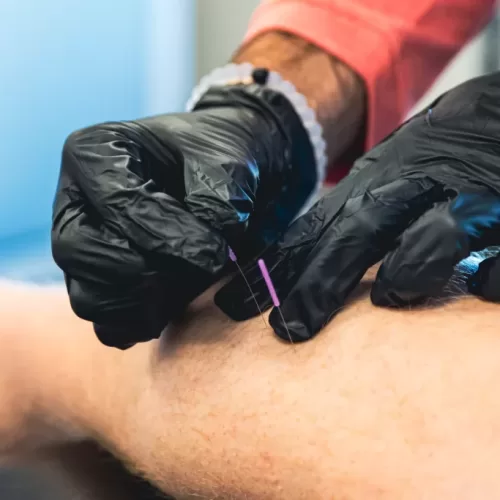Dry Needling

What Is Dry Needling?
Dry needling is a skilled technique done by a certified health care professional that involves the insertion of a thin filiform needle into the skin, muscles, ligaments, tendons, myofascial “trigger points,” or along nerve pathways. Dry needling is a powerful therapeutic technique that can help alleviate pain and discomfort caused by trigger points.
Common Conditions Treated with Dry
Needling:
- Acute Injuries
- Repetitive Stress Injuries
- Muscle Strain (ie. Hamstring, Calf, Quadricep)
- Muscle Spasms
- Hip & Knee Pain
- Patellar Tendinitis
- Plantar Fasciitis
- Shoulder pain
- Rotator Cuff Tendinitis
- Golfer’s/Tennis Elbow
- Neck Pain
- Headache
- Back Pain
- Sacroiliac Joint Dysfunction
Clinical Benefits
- Decreased muscle tension
- Decreased pain
- Decreased inflammation
- Enhanced collagen deposition
- Increased blood flow
- Increased flexibility
- Improved range of motion
- Decreased hypersensitivity of the nervous system
- Restoration of normalized movement when combined with corrective exercises

Resources
FAQ’s
Ready to Get Better?
Contact one of our offices today to begin your journey back to wellness.




